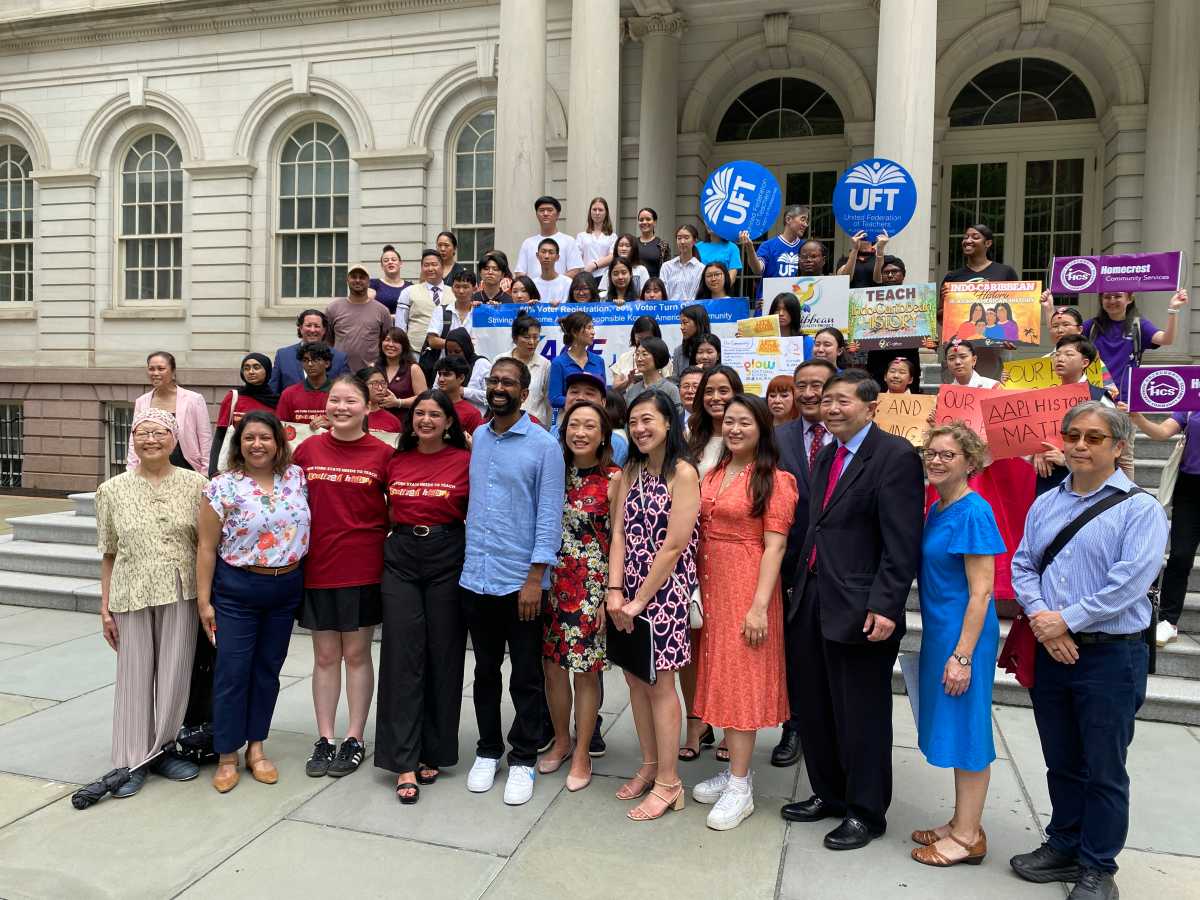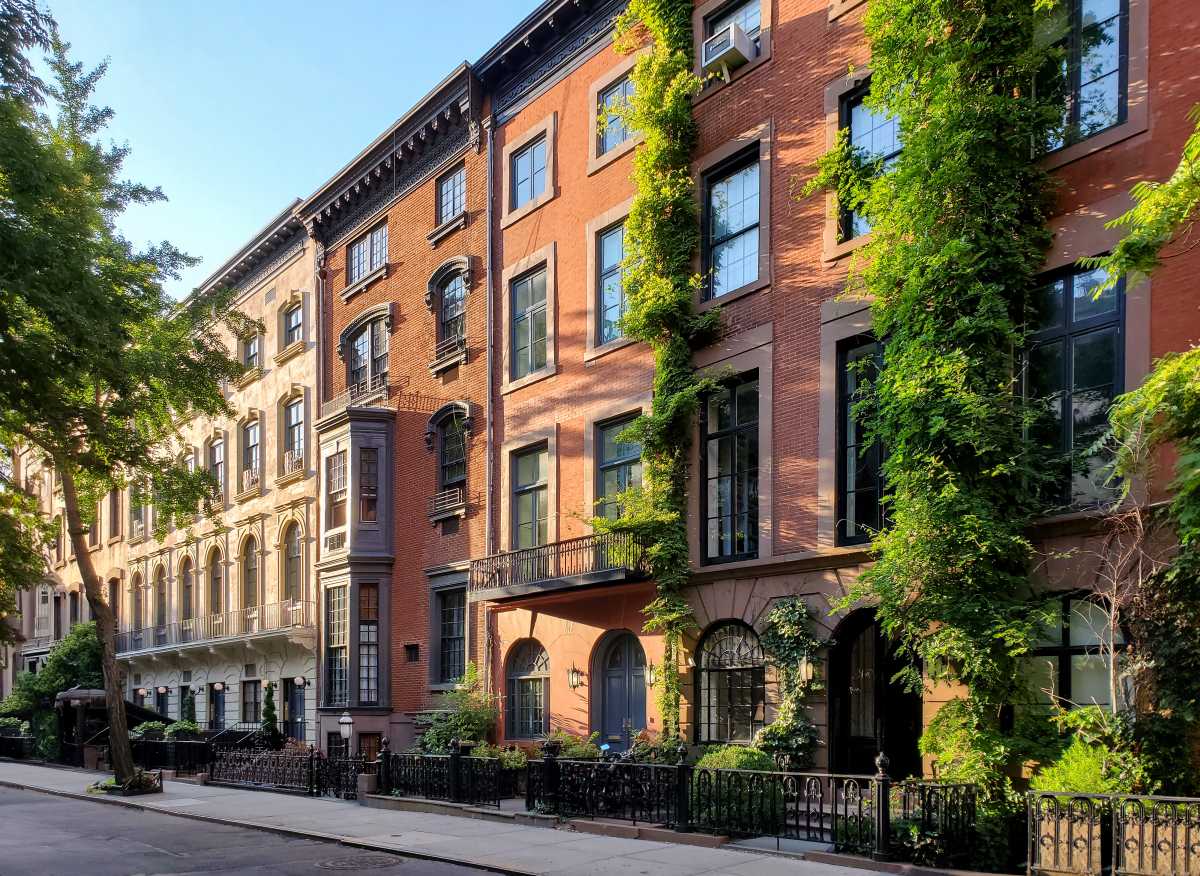By Elizabeth O’Brien
For all its 2,000 pages, a report on rebuilding the World Trade Center site did not go far enough in addressing specific public concerns, members of Community Board 1 said this week.
In mid-April, the Lower Manhattan Development Corporation released its final generic environmental impact statement on the redevelopment of the World Trade Center site. The document was a revised version of a draft released in January, and in addition to repeating the expected impacts of the decade-long rebuilding effort it individually addressed some 671 comments submitted in response to the first draft.
Even so, some community board members said the terms “comment noted” and “is considering” often substituted for the more substantial answers they would have preferred.
“I’ve been frustrated with how the Lower Manhattan Development Corporation has handled the final environmental impact statement, because they haven’t adequately addressed the health concerns — air quality and monitoring — for people living and working down here,” said Catherine McVay Hughes, a board member who volunteered to review the air quality portions of the report.
The air quality section of the “Mitigation Measures” chapter of the final report says that although the redevelopment plans include steps to ease the effects of construction, “significant adverse [particulate matter] impacts have been predicted in the vicinity of the site.” The report continues, “Since the cumulative impact from the other major projects is predicted to impact air quality in the same area, further coordination action would be necessary to minimize the emission of particulate matter from all construction activities.”
Later in the report, the response to a community request for constant air monitoring stated, “The Lower Manhattan Construction Coordination Group is considering a variety of environmental management practices for Lower Manhattan.” Hughes said she wanted more specific assurances that authorities would implement air-monitoring measures and take appropriate action if dangerous levels of toxins are detected.
A spokesperson for the Lower Manhattan Development Corporation did not respond by press time to a request for information on what kind of environmental monitoring would be implemented. A spokesperson for the Port Authority confirmed that the authority was charged with enforcing a three-minute idling limit for construction equipment on the World Trade Center site.
At a meeting on Wednesday, May 5, the World Trade Center Redevelopment Committee of C.B. 1 approved a resolution on the final generic environmental impact statement. The four-page document was slimmer than the 10-page resolution the board passed on the draft report in February, although board members added a provision that the previous resolution remained in effect.
“What we tried to do was highlight the issues we think are continuing concerns,” said Michael Connolly, the board member who compiled the resolution.
The resolution said the final report does not adequately address all the cumulative effects of the massive construction projects planned in and around the World Trade Center site, including the permanent PATH station, the new Fulton St. transit hub and the reconstruction of Route 9A. The board asked for clarification on the enforcement powers of the Lower Manhattan Construction Coordination Group and requested that the group include a paid community representative.
In a speech on Wednesday, Governor George Pataki announced that next month he and Mayor Mike Bloomberg will sign executive orders to create a Lower Manhattan Construction Command Center. The joint orders “will vest the Command Center with unprecedented authority from both the state and the city — enabling it to cut across bureaucratic lines and coordinate among the myriad agencies at work,” Pataki said.
When some community board members advocated a more forceful tone for the resolution, others countered that its moderate language was deliberate. A stronger approach might put the L.M.D.C. on the defensive and jeopardize the behind-the-scenes discussions taking place, said Julie Menin, a community board member and the founder of Wall Street Rising, who served on the L.M.D.C. memorial jury.
The L.M.D.C. is not obligated to respond to comments made on the final report, as it was to those on the draft generic environmental impact statement. A decision based on the report will be presented to the L.M.D.C. board at its June 2 meeting, according to L.M.D.C. spokesperson Joanna Rose. At that time, she said, details about the Deutsche Bank demolition will be added to the record. That development was not fully reflected in the report, since the L.M.D.C. board authorized a contract to dismantle the building at 130 Liberty St. around the same time as it released the final environmental impact statement.
Public comments will be received until May 24. Hughes said she hopes the L.M.D.C. will listen: “We want progress and movement, but we also want to make it livable for the next 10 years.”
Reader Services
Read More: https://www.amny.com/news/events-25/

































